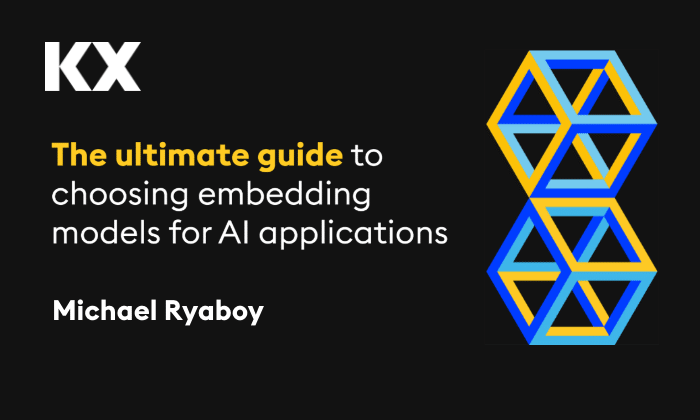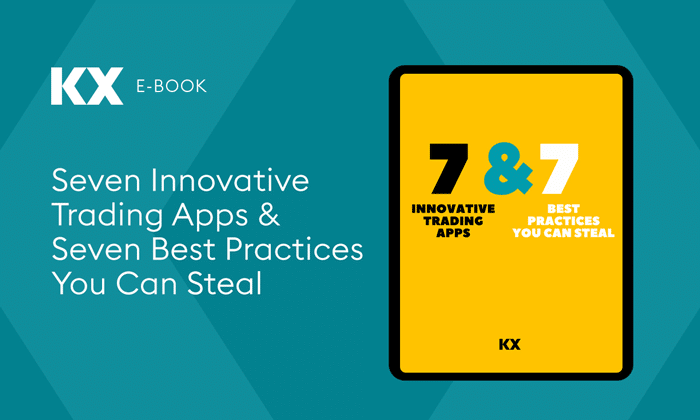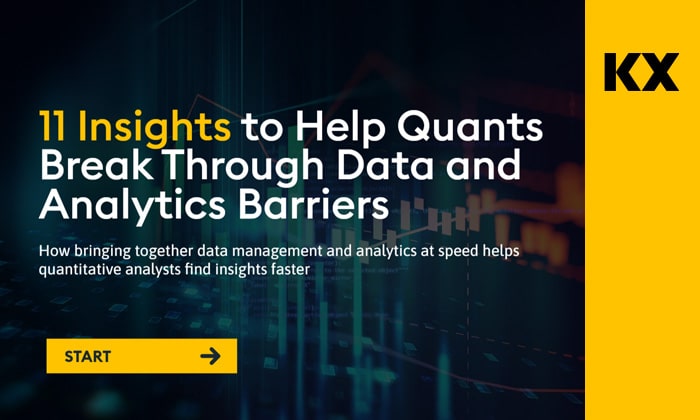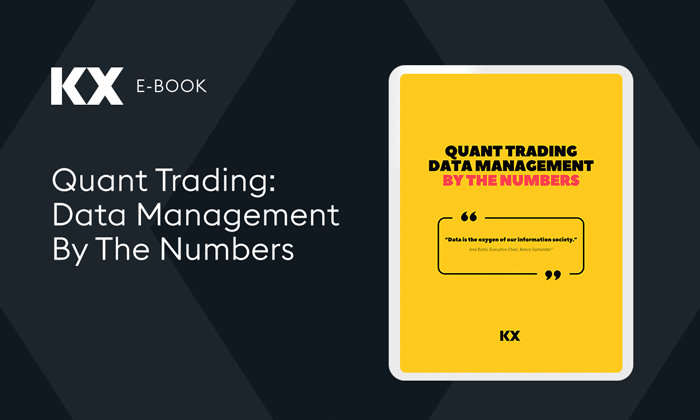Are you looking to optimize your trading strategies quickly, efficiently, and at scale? Have you wondered how your trading strategies would have performed under specific past market conditions? There are many known methods to analyze such scenarios, but backtesting with the right data analytics platform can be your key to future trading success.
The following introductory guide will help you learn more about using this strategy to improve testing insights.
Backtesting: Key points
- Learn about what backtesting is and how you can apply it to optimize a trading strategy
- Gain an understanding of the time periods you should test against
- Common challenges you may encounter with the process
- Comparing the test with other similar techniques
- Understand how to choose the right data analytics platform for your needs
What is backtesting?
For those who need a refresher, think of backtesting as a flight simulator for pilots. Before flying an actual plane, pilots train in a simulator to replicate real-time flight conditions. Similarly, backtesting is a method that helps evaluate the viability and effectiveness of trading strategies. Traders and investors apply these strategies to historical market data so they can simulate past performance.
How backtesting works
Backtesting operates by taking a proposed trading strategy and running it against historical market data to assess its potential performance. The method includes:
- Defining the strategy’s rules and parameters.
- Applying guidelines to historical data to simulate trades as if executed in real time.
- Analyzing key metrics to evaluate how effectively the strategy performs.
Although this is a prediction, it’s backed by evaluated actionable data. Instead of trading based on speculation, every strategy can be supported by historical data.
Determining time periods to test against
The first important consideration is what time period you should test against. This backtesting period depends on the type of strategy in question and the average holding period. However, time period selection can be subjective based on the strategy’s needs.
For a better look at backtesting strategies and holding periods, here’s a quick breakdown:
- Short-term strategy: refers to holding periods that are less than a week. In most cases, only 10 years is needed to generate sufficient data for this strategy.
- Long-term strategy: any holding position for more than a month is considered a long-term strategy. Testing periods of 15 years are common and offer more than enough actionable data.
- Intraday strategy: in some cases, holding periods can be less than 24 hours. It’s common for testing to utilize three to four years of data.
- Trend-following strategy: trends can be very consistent or fluctuate significantly over time. To ensure the best outcome, it’s advised to use at least 10 years of historical data.
- Volatility-based strategy: depending on market volatility, finding a strategy that works in your favor can be risky. However, it is possible to use that volatility to your advantage. Extended periods of testing are advised here, as the success of the strategy is dependent on the stability of volatility regimes.
Aside from the various time periods you can work with, it is equally important to consider the metrics in backtesting. You aren’t looking at just a single focal point of data. It is a combination of data points that are meant to be combined for a more cohesive view of the situation.
What backtests can measure
There are many ways you can go about measuring your backtests, but some data points are more common than others. Common metrics in backtesting include:
- Exposure to various market segments
- The full return of the portfolio over a given period
- Net profit and loss
- The portfolio’s return adjusted for a certain risk level
- Overall volatility regarding the dispersal of returns
There are other measurements available, but these are the most common for a reason. They offer a comprehensive take on the data to give you actionable information. Even with all the supporting data you can imagine, this test comes with its own unique challenges.
Common challenges to backtesting
Although backtesting can offer many benefits, some common challenges may occur. Understanding these can help you develop realistic and adaptive trading strategies. Potential challenges include:
- Future market conditions hindering the effectiveness of your strategy
- Insufficient data sets leading to missed details in market conditions
- A strategy that tests well in a bearish market but might not do as well in a bullish market
- Past datasets skewed by a variety of unique market events or favorable sentiment
- Strategies that work well in one financial market (stocks) but may not perform as well in another (forex)
Challenges aside, there’s always the chance of human error. Many people end up juggling their own biases, which can skew their tests. Ignoring shifting trading costs or having a survivorship bias in trading can lead to risky decisions. However, technology can help us avoid some of these hurdles.
Machine learning in backtesting
Machine learning (ML) has an extensive list of benefits and applications, including trading, strategizing, and backtesting. This technology can rapidly analyze large volumes of historical datasets, allowing analysts to evaluate data more quickly. You get a much greater scope of time-to-value by integrating ML.
Other notable benefits include enhanced data integration, better overall accuracy, and improved trading strategy outcomes. Between AI and machine learning, you can test multiple strategies simultaneously with unmatched efficiency and precision.
Backtesting vs. Other testing techniques
Although this article focuses on backtesting, it isn’t the only process available for testing strategies against historical data. Two other common testing techniques are utilized for this same purpose.
Backtesting vs. scenario analysis
This approach to testing includes evaluating possible outcomes for various hypothetical scenarios. It is a simple approach that helps analysts and decision-makers adjust their strategies accordingly.
With scenario analysis, you get a combination of qualitative assessments and quantitative models. In backtesting analysis, you’re focused on objective analysis or solely quantitative analysis.
Backtesting vs. paper trading
You will also find similarities and unique comparisons between paper trading and backtesting. Paper trading divides historical data into several segments, some of which can include both testing and training periods.
Backtesting, on the other hand, relies on historical market and price data. It isn’t so much about which one is better than the other; it is about what you’re trying to accomplish. With paper trading, you get combined elements of backtesting, in-sample, and out-of-sample testing.
Choosing the right data analytics platform for backtesting
As you can see, backtesting can provide significant advantages when assessing the viability of your trading strategies. This article has covered the method and techniques of backtesting, challenges, and benefits to traders. However, choosing an industry-leading platform will help you achieve higher levels of success and avoid common pitfalls (Read our blog for more information).
Our highly-performant analytics platform ensures large volumes of data – both real-time and historical – can be queried quickly and efficiently, reducing the time it takes to iterate and fine-tune your strategies. We enable granular, point-in-time trade performance investigation, allowing for improved insights and decision-making. By testing strategies against a wide range of data, you can enhance alpha generation and minimize market impact, ensuring more effective trading outcomes.
Ready to rapidly assess the viability and effectiveness of your trades? Learn more here or book a demo today.













